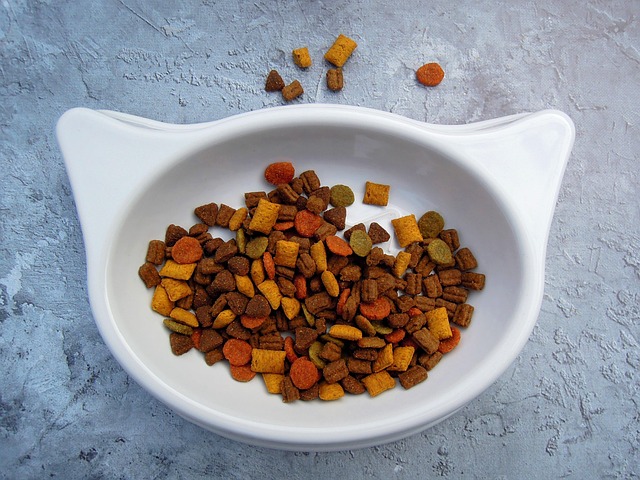The Evolving Pet Plate
Pet owners aren’t just buying kibble anymore—they’re scanning ingredient lists like they’re shopping for themselves. Over the past few years, more people have come to see their pets as family, and that shift has changed the way we think about what goes in the bowl. In 2023, it’s no longer about pet food. It’s about pet nutrition.
That means fewer mystery meals and more clarity. Human-grade ingredients aren’t a nice-to-have—they’re becoming the baseline. Shoppers want to recognize every item on the label (think beef, carrots, quinoa—not “meat by-product” or cryptic additives). If a brand can’t tell you where the food was made or what’s inside, it’s a hard pass.
Transparency isn’t just a marketing buzzword; it’s a deal-breaker. From clearly listed protein sources to sustainability claims, today’s pet parent expects honesty. And they’re willing to pay for it.
The days of one-bag-fits-all feeding are fading. Owners are paying attention to digestive health, allergies, energy levels, and more. They want nutrition plans, not just scoops in a bowl. It’s care-through-food—positioned, priced, and packaged for people who no longer see animals as pets, but as companions who deserve better.
Trend 1: Fresh & Frozen Meals Rise
Subscription-based pet food services are having a moment. More pet owners are ditching the kibble aisle in favor of fresh or frozen meal deliveries tailored to their animal’s breed, age, and health goals. Companies like The Farmer’s Dog or Nom Nom have turned feeding time into a more intentional, data-driven experience—one that feels closer to prepping dinner for a family member than ripping open a bag of dry pellets.
Why the shift? For starters, nutrition. Fresh and frozen recipes tend to use whole-food ingredients, often human-grade, and skip out on the preservatives that keep kibble shelf-stable for months. Pets dealing with allergies, digestive issues, or skin flare-ups often respond well to these clean-label diets, prompting more pet parents to make the switch.
But freshness comes at a price—literally. These services are subscription-based, and monthly costs can sit somewhere between $100 and $300 depending on the pet’s size and metabolism. Then there’s storage: frozen meals take up space, and shipping logistics can be finicky, especially in hotter climates. Pet parents need to factor in freezer space, consistent delivery schedules, and some level of familiarity with portion control.
Still, for many, the trade-offs are worth it. Convenience, better health outcomes, and peace of mind go a long way. Fresh food might not be for every pup or human budget—but in 2023, it’s clearly moved from niche to mainstream.
Trend 2: Functional Ingredients Go Mainstream
Pet food isn’t just about filling bowls—it’s about addressing real-life health needs. This year, formulas designed to support joint health, digestion, immune balance, and skin conditions have gone from niche to norm. Pet parents are reading labels like athletes read supplement facts, and they’re demanding more than vague promises.
The shift is being powered by ingredients with real potential. Probiotics for gut health. Turmeric for inflammation. CBD for calming and mobility. Omega-3s for joint strength and glossy coats. Not gimmicks—just straightforward science-backed additions being built into everything from daily meals to treats.
But trust is everything. Pet owners want to see clinical backing or vet endorsements, not buzzwords. That’s pushing brands to publish research, cite sources, and lean into transparency. If a bag makes a health claim, today’s buyers expect receipts.
It’s a smart move—healthy pets make for happier humans. And the brands that can deliver measurable well-being will earn long-term loyalty in a cluttered market.
Trend 3: Sustainable Proteins Gain Ground
New Protein Sources Take Center Stage
As concerns about the environmental impact of traditional meat production grow, pet food companies are turning to more sustainable protein alternatives. Insect-based, plant-derived, and lab-grown proteins are no longer fringe concepts — they’re making their way into mainstream pet nutrition.
Key sustainable protein options include:
- Insect proteins (like black soldier fly larvae): High in protein, low in environmental cost
- Plant-based proteins (such as lentils, chickpeas, and quinoa): Great for allergy-sensitive pets
- Cultivated/lab-grown meat: Offers the taste and profile of real meat without the resource drain
Comparable Nutrition, Lower Footprint
These alternative proteins aren’t just better for the planet — they also deliver comparable nutritional value:
- High in essential amino acids
- Often easier to digest than some animal proteins
- Lower in allergens for sensitive pets
They also help reduce:
- Carbon emissions
- Land and water usage
- Reliance on overfishing and mass livestock farming
Consumer Education is Key
Despite their benefits, some pet owners remain cautious. That’s where brand transparency and education come into play. Leading companies are:
- Clearly labeling ingredients and sourcing
- Offering white papers and vet-backed nutrition guides
- Using QR codes on packaging to link to info on sustainability and sourcing
- Launching educational campaigns to address myths and showcase results
Many brands are incorporating these proteins gradually into blends, giving pets — and their humans — time to adjust.
Bottom line: As sustainability becomes a growing concern, expect to see more protein innovation at your local pet store. The challenge for brands? Balancing eco-consciousness with pet owner trust.
Trend 4: Breed- and Age-Specific Formulas
As pet owners seek more targeted ways to support their pets’ health, generic feeding models are quickly becoming outdated. The new standard? Nutrition tailored to specific needs, whether it’s a high-energy Border Collie, a senior Chihuahua, or a growing Ragdoll kitten.
Why One-Size-Fits-All is Fading
Traditional formulas were designed for convenience—not precision. But pets, like people, thrive on nutrition that reflects their unique biology.
- Breed-specific traits influence metabolism and susceptibility to certain conditions
- Age impacts digestion, joint health, and energy requirements
- Size and activity level dictate caloric intake and nutrient balance
Pet Nutrition, Tailored
More pet food brands are investing in research to deliver formulas that acknowledge differences among pets. No longer just a marketing gimmick, these targeted products are backed by science and customer demand.
Key Areas of Customization:
- Breed-specific formulas that address common health concerns (e.g. heart health for Cavalier King Charles Spaniels)
- Life-stage nutrition for puppies, adults, and senior pets
- Activity-based variations for working dogs vs. primarily indoor cats
Brands Leading the Way
The rise of personalized nutrition startups and DTC (direct to consumer) pet food services is fueling this trend.
- Subscription-based services that collect pet data via online quizzes
- Recipes adapted for changing life stages or health goals
- Greater collaboration with vets and nutritionists for trust and transparency
Breed- and age-specific nutrition is about more than marketing—it’s part of a larger movement toward informed, responsible pet care.
Trend 5: DIY Feeding and Raw Diets
More pet owners are taking matters into their own kitchens. From fully raw to lightly cooked and hybrid models, DIY feeding is up—and it’s not just a fringe trend. Dog and cat parents are scouting out butcher-grade organs, prepping batches on Sundays, and following nutrient charts like they’re training for a marathon.
Why the shift? Simple ingredients and full control. People trust what they make more than they trust what they can’t pronounce, and many believe fresher food equals a healthier pet. There’s anecdotal evidence and glowing skin-and-coat transformations all over social media to back it up.
But this isn’t a free-for-all. The risks are real—imbalanced meals can cause long-term harm. Calcium ratios, essential micronutrients, and food safety are not tasks to wing. Vets and board-certified nutritionists aren’t optional; they’re essential. The good news: tech’s stepping in. Apps now exist to calculate proportions, track nutrient profiles, and suggest vet-approved recipes based on pet weight, age, and dietary need. It’s precision feeding without the guesswork—if you use it right.
DIY isn’t about tossing your dog some raw chicken and calling it gourmet. It’s a commitment, but for many, it’s one that feels worth it.
Navigating the Shift as a Pet Owner
When you’re staring at a row of premium pet foods, each one bragging about wild-caught this or vet-approved that, it’s easy to feel lost. But cutting through the noise starts with the label. Look for complete-and-balanced certifications from major regulatory bodies like AAFCO. Stick to ingredient lists that lead with whole proteins, not by-products or vague terms like “poultry meal.” And when a product boasts a benefit—like better joint health or shinier coats—ask what backs it up: clinical studies? Or just clever marketing?
This is where professionals come in. Vets and pet nutritionists aren’t just for crisis consultations. They understand your animal’s individual needs and can help decode what’s necessary vs. what’s just trending. Especially if you’re exploring raw or fresh diets, get advice grounded in science, not social media anecdotes.
Speaking of trends, not every new ingredient or feeding practice fits every animal. Just because a product is all over Instagram doesn’t mean it’s ideal for your ten-year-old bulldog. Avoid falling into the fad trap. Feeding your pet should be thoughtful and steady—not reactive. Nutrition isn’t a place to experiment blindly. Skip the hype. Focus on what nourishes your companion long-term.
Looking Ahead
Pet food isn’t just food anymore—it’s a regulated, tech-fueled industry trying to keep pace with humans’ wellness obsession. Regulation is tightening in 2023 and beyond. Pet food labels are under increased scrutiny as agencies push for clearer definitions around terms like “natural,” “organic,” and “human-grade.” Don’t be surprised if we see mandatory standards around ingredient sourcing and even lab-testing disclosures in the coming years.
Tech is only accelerating this shift. Smart meal dispensers that portion based on pet weight, breed, and age are trending upward. On the formulation side, AI and biotech tools are being used to develop custom diets that adapt with a pet’s changing health. Innovation isn’t just flash—it’s functional.
Responsible feeding, moving forward, means more than just good intentions. It means feeding for longevity, not just convenience. That includes staying skeptical of marketing, reading beyond the front of the bag, and trusting brands that invest in nutritional science.
The wellness wave shows no sign of slowing down. And as more pet parents apply the same care to their pets’ diets as their own, the future of pet nutrition is shaping up to be more personalized, transparent, and data-driven than ever before.
For broader context on emerging pet trends beyond nutrition, see the Weekly Pet News Roundup.


 Thadriel Tavendria, the founder of Pet Hub Loop, created the platform to help strengthen the bond between people and their pets. With a passion for animal welfare, he envisioned a trusted hub offering pet news, breed guides, product reviews, and training advice—making Pet Hub Loop a supportive resource for pet owners everywhere.
Thadriel Tavendria, the founder of Pet Hub Loop, created the platform to help strengthen the bond between people and their pets. With a passion for animal welfare, he envisioned a trusted hub offering pet news, breed guides, product reviews, and training advice—making Pet Hub Loop a supportive resource for pet owners everywhere.